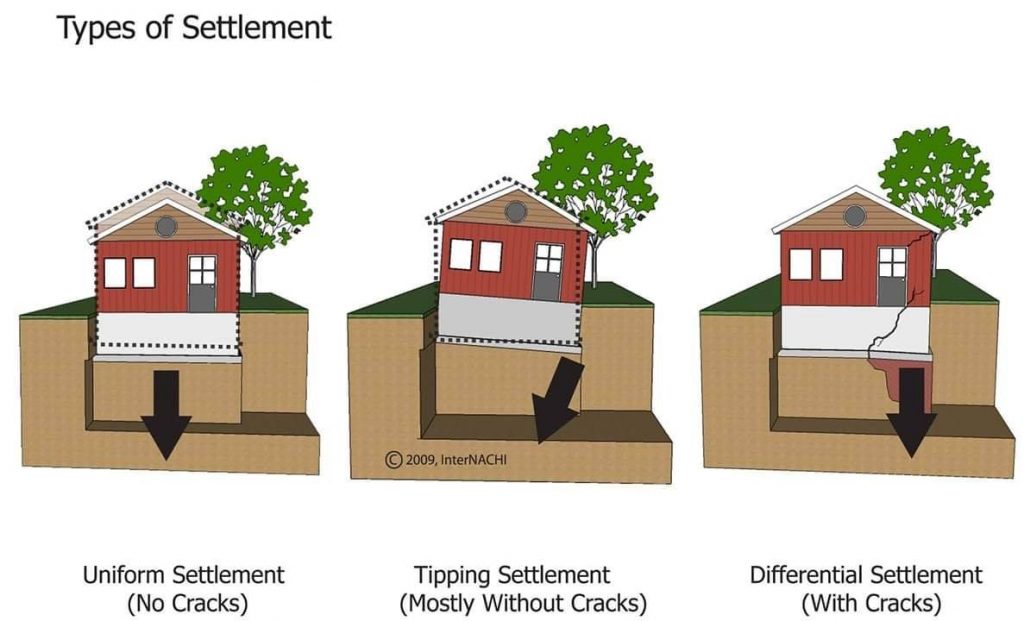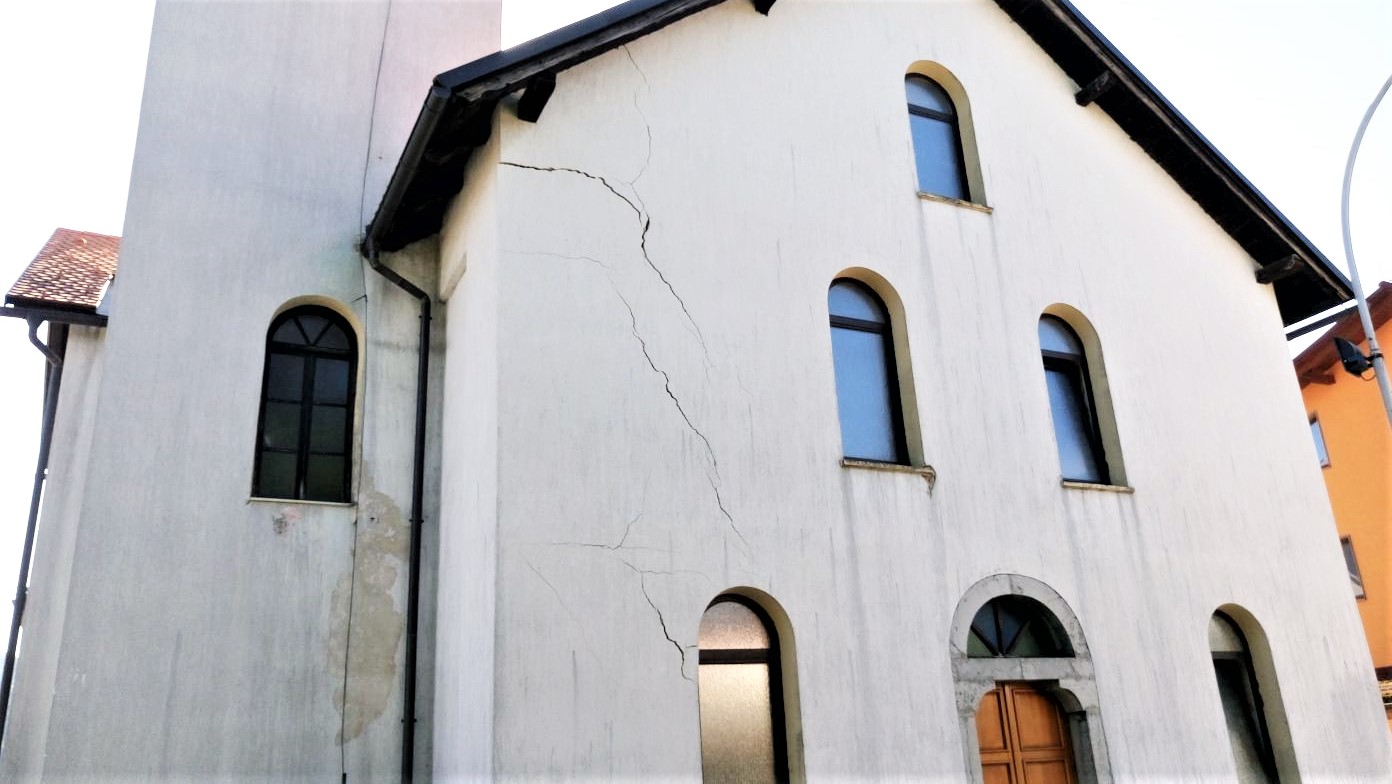Differential settlements
Settlement of the foundation structures is a problem that people have faced ever since they first started constructing. The size of a foundation structure settlement is primarily dependent on the weight of the structure and the deformation characteristics of foundation soil. When analyzing this problem, it is necessary to distinguish between the concepts of uniform and differential settlements.
What are differential settlements?
Settlement of the foundation soil is a vertical displacement of the soil surface caused by the workload of the building. During and after the building construction, settlement of the foundation structure is considered normal and acceptable to a certain extent. However, a potential problem occurs with differential settlements.
Differential settlements are uneven foundation settlements that can be the result of numerous causes.

The most familiar example of differential settlements and their consequences is the Leaning Tower of Pisa, which took two centuries to build due to problems with differential settlements and inclination. Because Pisa is built on wetlands, with the geological profile of the soil consisting of clay and fine sand, and is characterized by a high level of groundwater, conditions for the construction of a tall structure have been challenging since the very beginning. The main cause of the differential settlement and inclination of the Tower is the increased deformability and compressibility of the foundation soil in the area underneath the southern part of the Tower. However, differential settlements can cause significant problems for other, lower structures as well, and it is necessary to be familiar with the potential causes in order to eliminate them or at least reduce their effect to an acceptable level.

Causes of differential settlements
- Soil of different lithological characteristics in the horizontal direction (different compressibility and soil compressibility beneath different parts of the foundation structure).
- Drying of soil surface layers.
- The proximity of trees with large roots.
- Piping leaks, sewer drainage etc.
- Excavations near the structure.
- Different dimensions and depth of structure foundation.
- Vibration.


How to recognize the potential occurrence of differential settlements?
Leaving out extreme cases like the Leaning Tower of Pisa, the most common sign of differential settlements is the occurrence of cracks on the structure at an angle of 45˚, usually around the openings (doors, windows). If there is a shift in the soil beneath the structure, or if one part of the structure has foundations on rock and another part on clay or embankment, the result is a change of the state of stress that is transmitted from the foundation to the structure, creating cracks in the walls.
It is important to note that these are not the same as the cracks of a mesh shape, that do not pose a threat to the stability of the structure and occur due to poorly conducted or dilapidated plaster. Vertical, horizontal or sloping cracks are more characteristic for the edges of structures and point to potential differential settlements.

Methods of prevention and remediation of the consequences of differential settlements
The consequences of differential settlements may be significant and jeopardize the stability of the entire structure. Therefore, it is necessary to carry out geotechnical exploration and investigation works in order to determine the possibilities for prevention and choose the optimal method of structure foundation remediation.
The best way to prevent potential differential settlements is to carry out adequate exploration and investigation works at the location where the structure is planned. By analyzing the results of these investigations, optimal solutions in terms of the type of foundation of the planned structure as well as the possible type of soil improvement can be obtained.
Geotechnical exploration and investigation works are key in the foundation remediation in order to find the cause of differential settlements. The optimal method of foundation structure remediation is defined based on the specific cause. The foundation remediation can be realized by applying several technologies, the most commonly used being:
- Foundation remediation by concrete underpinning.
- Foundation remediation with jet grouting.
- Foundation remediation with micro piles.
- Foundation remediation by using expanding geopolymers.
Considering the possible causes of differential settlements and their impact on the overall stability of structures, it is necessary to keep them in mind when designing the foundation and landscaping, in order to reduce their effect to an acceptable level.
